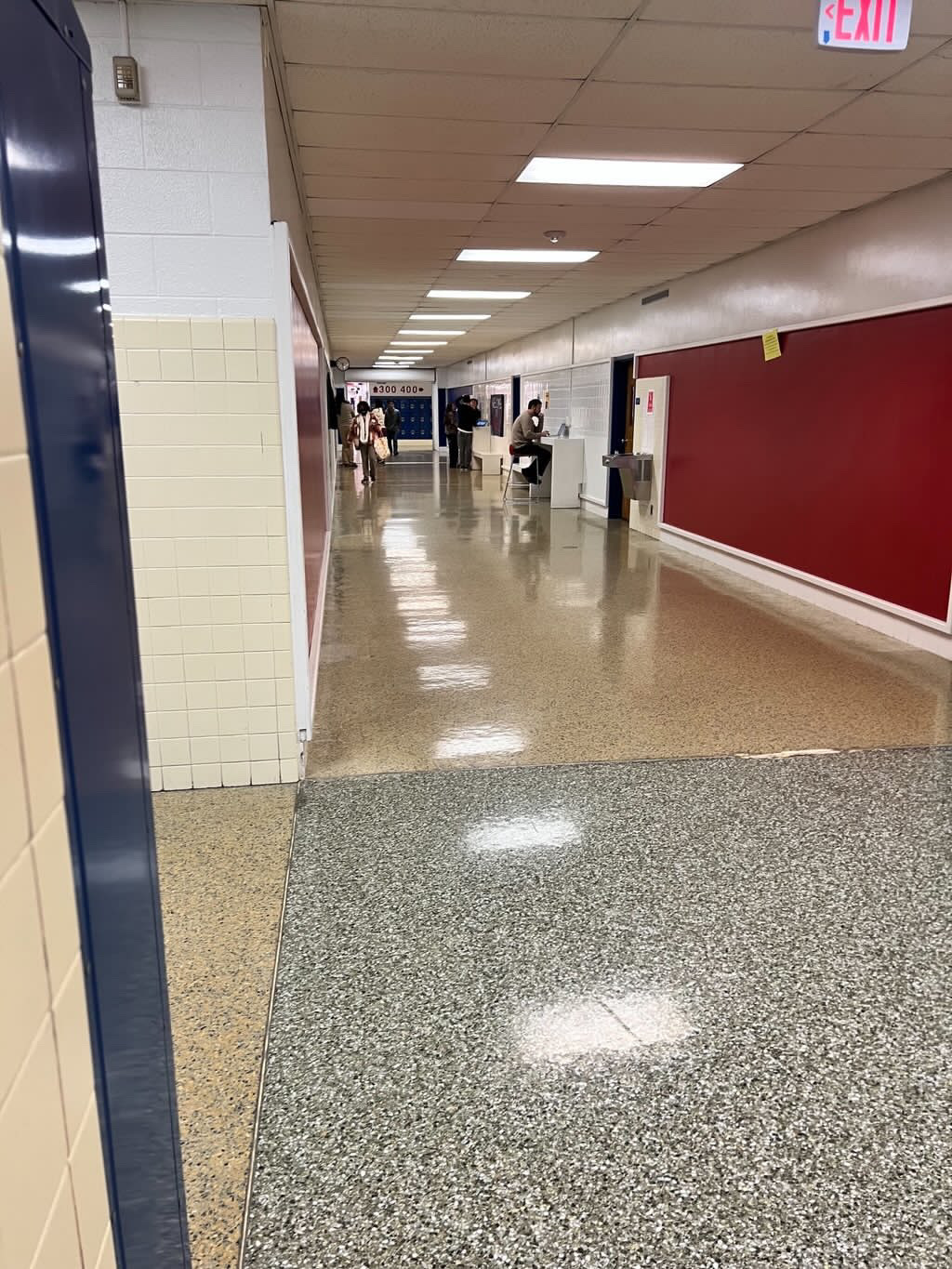Plan in Place to Boost Math Performance
April 8, 2014
In response to disappointing student performance on last year’s math SOL tests, the math department has adopted a flexible list of improvement goals crafted in partnership with administration and division specialists aimed to help reboot instruction and student math proficiency over the next few years.
With passage rates of 31.79 percent and 53.04 percent on the 2013 Algebra I and Algebra II SOL tests, respectively, Kempsville is currently SOL “Accredited with Warning.” Kempsville’s cumulative 2013 math SOL pass rate, which includes the Geometry SOL, was 59 percent, bringing three-year score averages running from 2011 to 2013 down to 67 percent, just shy of the state’s standing benchmark of a 70 percent passing rate over three years.
Last year’s results did not deliver the hoped-for rebound from the steep dip in 2012 math scores following a statewide SOL overhaul that year injecting new objectives and question types into the yearly test. That restructuring shifted the focus placed in past testing years on general competency skills established under the SOL Enduring Understandings framework to more application-based assessment centered on a list of Essential Knowledge and Skills targets.
Kempsville posted Algebra I and II SOL pass rates in 2012 of 29.15 percent and 51.80 percent, respectively, and a Geometry SOL pass rate of 40.63 percent. While dips in testing performance in years immediately following such curriculum shifts are not uncommon, schools are generally expected to rebound more than just a few points from post-change low marks during the following year.
Kempsville joins two other Beach high schools – Bayside and Green Run – and 393 other Virginia schools in receiving “Accredited with Warning” status.
“Schools that are Accredited with Warning undergo academic reviews and are required to adopt and implement school improvement plans,” according to the Virginia Department of Education website. “Schools that are Accredited with Warning in English and/or mathematics also are required to adopt instructional programs proven by research to be effective in raising achievement in these subjects. A school may hold this rating for no more than three consecutive years.”
Under that directive, the math department began work in August on a workable Math Improvement Plan laying down five goals to guide math instruction over the next few years towards higher student achievement. Those goals include the following: aligning math curriculum with the new test standards, assessing student learning daily, ensuring instruction directly engages students and is student-centered, developing a support system for students near the SOL passing score of 400, and extending professional development opportunities to teachers.
“The real bottom line is we need to know what we want students to learn each day,” Mr. Harris said. “We need to assess where they are in relation to that learning target every day. If a significant number of students haven’t learned it, our teachers have got to do something about that the next time they meet with the students.”
The math department is collaborating with the division’s Department of Teaching and Learning to identify areas for improvement in Kempsville’s math instruction. In addition to helping fine tune the math improvement plan and create common assessment tools for teachers’ use earlier this year, Mr. Harris said specialists from the Department are currently videotaping classroom lessons taught by exemplary math instructors across the division as a resource for Kempsville teachers.
The math department has also put in place extensive opportunities for students to get additional instructional support outside of class, department chair Ms. Veronica Hartless said. She said this year the department is depending more on online resources such as online textbooks, Khan Academy, Edmodo, and Remind101 as tools for practice and class communication.
“We are working hard to give students every opportunity to be successful,” Ms. Hartless said. “We are offering individual tutoring after school, during planning periods, and during study halls. We offer peer tutoring every week, SOL tutoring during study halls three days a week, and in the library every A-day.”
Math teacher Ms. Shelby Foley said decreasing student enrollment over the past few years has not helped the department’s cause. Sliding enrollment decreases population-based teaching allocations and until this year caused the discontinuation of Algebra and Geometry Lab classes, elective courses that give students a chance to meet with math teachers every day for added practice.
“All members of the math department are working hard to meet the new requirements of our three-year plan,” Ms. Foley said. “Those teachers with one or more SOL class are dealing with a very difficult year. They need all the support and encouragement from their colleagues, the administration, the parents, and in particular the students.”
Mr. Harris praised the math teaching staff for responding to the situation with incredible positivity and professionalism. The math teachers’ efforts are “noted and well appreciated,” he said.
“People need to understand that we’ve got some weaknesses and that we’re working to correct them,” Mr. Harris said. “We’re not trying to sweep it under the rug or whitewash it or spin it in any way other than what it is. It’s a big challenge, and we’re up to it.”







